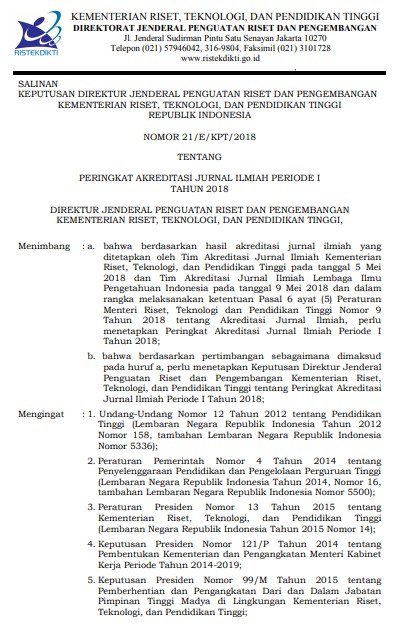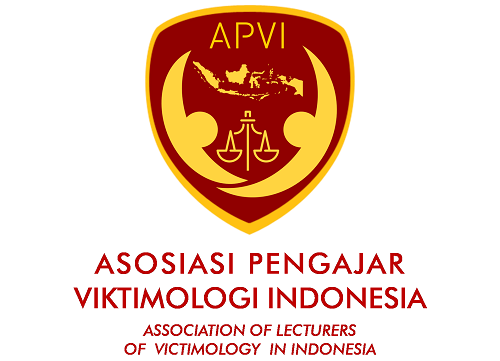Prevention of Cybercrime through the Development of Criminal Responsibility Principles for Internet Users
Abstract
There is no guarantee of security in cyberspace. Cybercrime is the use of computer technology for illegal activities. Cybercrime ignores territory, and can even become an automatic crime according to the nature of the machine. The crime prevention model, which has been more reactive and only suitable for the real world, is not an effective way to deal with cybercrime. This research is normative legal research, with the main data source in the form of secondary data. Hacking is an illegal activity that takes many victims and its handling is not complete. The difficulty that arises is the issue of jurisdiction because perpetrators and victims are often in different jurisdictions. Although legal instruments have adopted provisions on the principle of ubiquity, in practice it is not as easy as imagined. The Bangkok International Summit (2007) invites countries to promote cyber security by increasing and developing international global partnerships to prevent, detect, and cybercrime, but this has not been implemented properly. For this reason, it is necessary to develop the principle of criminal responsibility which can be an incentive in overcoming cybercrime.
Keywords: cybercrime; hacking; ubiquity; criminal responsibilityFull Text:
PDFReferences
Arief, Barda Nawawi. (1998a). Beberapa Aspek Kebijakan Penegakan dan Pengembangan Hukum Pidana. Bandung: Citra Aditya Bakti;
-------. (2009b). Tujuan dan Pedoman Pemidanaan, Perspektif Pembaharuan Hukum Pidana dan Perbandingan Beberapa Negara. Semarang: BP UNDIP;
AS Tanggapi Serius Spionase Siber. Kompas, 22 February 2013.
Branscomb, Anne. (1983). Global Governance of Global Networks: A Survey of Transborder Data Flow in Transition. Vand. L. Rev. 36. 987-88.
Brenner, Susan W. (2008a). Distributed Security: Moving Away from Reactive Law Enforcement. International Journal of Communication Law and Policy, Special Issues Cybercrime Spring.
-------. (2001b). Is There Such a Thing as Virtual Crime?. 4 CAL. CRIM. L. REV. 4. 1-12, e-paper version at http://boalt.org/CCLR/v4/v4brenner.htm, accessed date 3 Maret 2007.
Feenberg, Andrew. (1991). Critical Theory of Technology, Oxford: Oxford University Press.
Grabosky, Peter N. (2001). Virtual Criminality: Old Wine in New Bottles. Social & Leg. Studies 10. 243.
Harnad, Steven. Post-Gutenberg Galaxy: The Fourth Revolution in the Means of Production of Knowledge. Public-Access Computer System Review 2(1): 39-53, e-paper version can be read in http://cogprints.org/1580/00/harnad91.postgutenberg.html, accessed date 23 August 2003.
Lipnack, Jessica & Jeffrey Stamps. (1994). The Age of the Network, Organizing Principles for the 21st Century. New York: John Wiley & Sons, Inc;
Nasibitt, John. Naisbitt, Nana. and Philips, Douglas. (2001). High Tech, High Touch, Pencarian Makna di Tengah Perkembangan Pesat Teknologi. Bandung: Mizan.
Priyatna, Dwidja. (2009). Sistem Pelaksanaan Pidana Penjara di Indonesia. Bandung: Refika Aditama.
Raharjo, Agus. (2007a). Hukum dan Teknologi: Suatu Tinjauan Filosofis dan Kritik terhadap Positivisme Hukum. Semarang: BP UNDIP.
-------. (2007b). Kajian Yuridis terhadap Cyberporn dan Upaya Pencegahan serta Penanggulangan Penyebarannya di Internet”, Jurnal Hukum Respublica. 7(1).
Reidenberg, Joel R. (2004). States and Internet Enforcement. U. Ottawa L. & Tech. J. 1, 19.
Sahetapy, J.E. (1982). Suatu Studi Khusus Mengenai Ancaman PIdana Mati Terhadap Pembunuhan Berencana. Jakarta: Rajawali Press.
Sholehuddin, M. (2003). Sistem Sanksi dalam Hukum Pidana, Ide Dasar Double Track System dan Implementasinya. Jakarta: Rajawali Press.
Spion Siber Unit 61398. Kompas, 25 February 2001;
The Cybercrime Convention Committee (T-CY), Strengthening Co-Operation, Between Law Enforcement and the Private Sector, Examples of How the Private Sector has Blocked Child Pornographic Sites, Strasbourg, 20 February 2006, http://www.coe. int/t/e/legal_affairs/legal_co-operation/combatingeconomic_crime/6_cybercrime/t-cy/T-CY_2006_04-e-child.pdf., accessed date 28 Maret 2007
DOI: https://doi.org/10.20884/1.jdh.2021.21.3.3256
Refbacks
- There are currently no refbacks.
JURNAL DINAMIKA HUKUM Indexed by :
 | Jurnal Dinamika Hukum | |
| Faculty of Law, Universitas Jenderal Soedirman | Copyright of Jurnal Dinamika Hukum | |
| Yustisia IV Building, Law Journal Center | ISSN 2407-6562 (Online) ISSN 1410-0797 (Print) | |
| Purwokerto, Central Java, Indonesia, 53122 | JDH is licensed under a Creative Commons Attribution 4.0 International License | |






